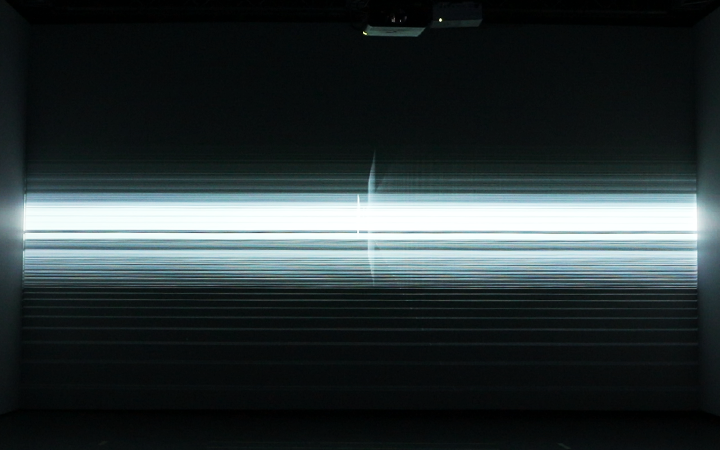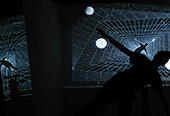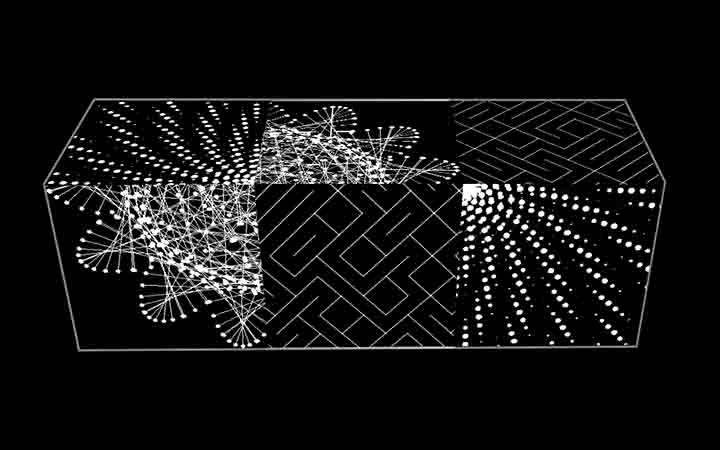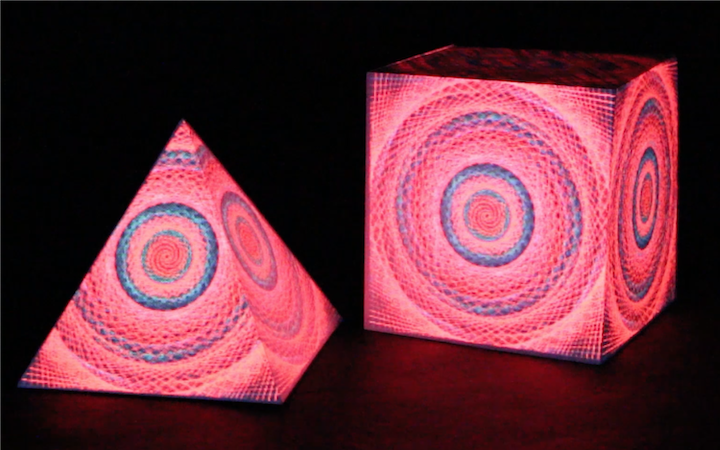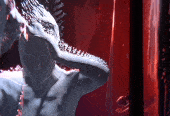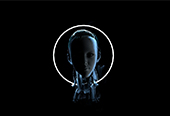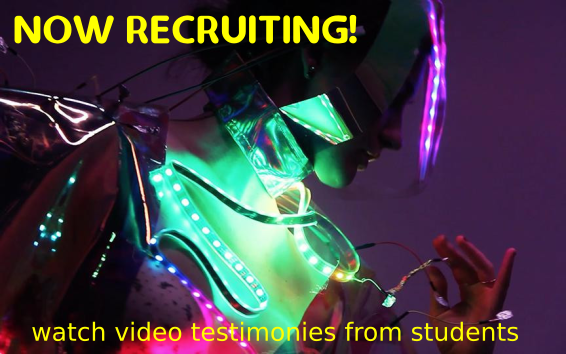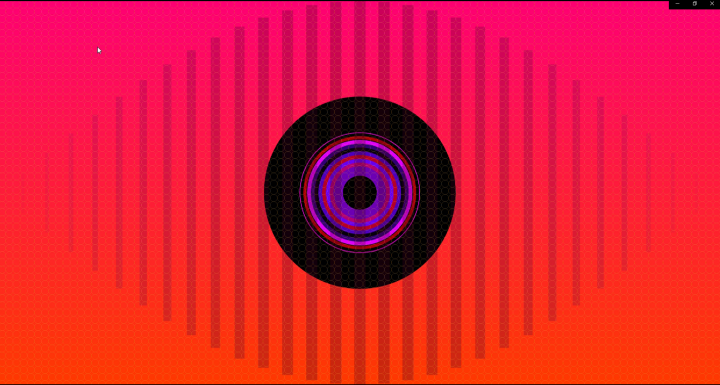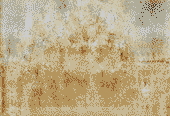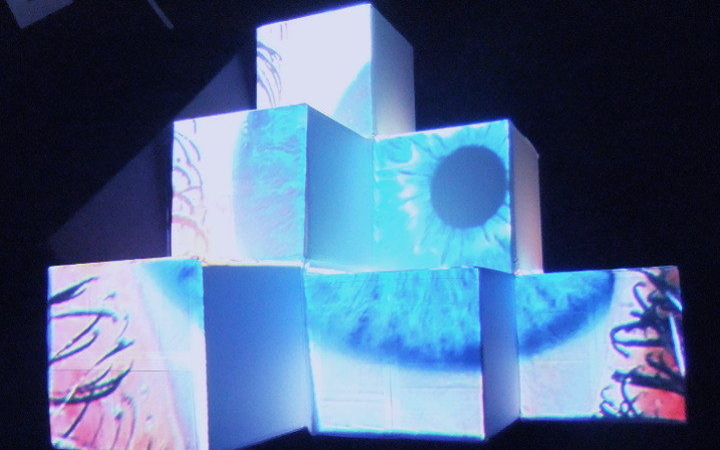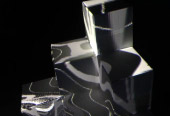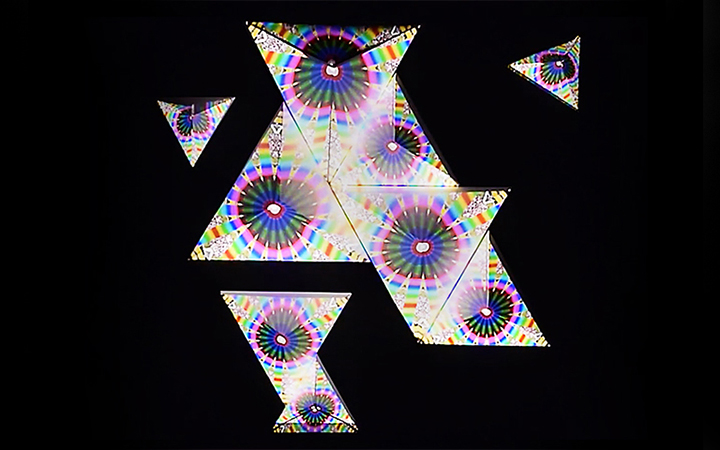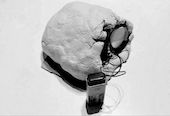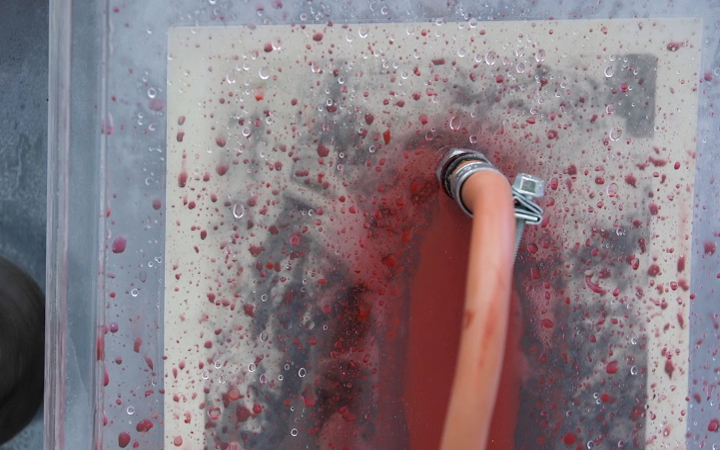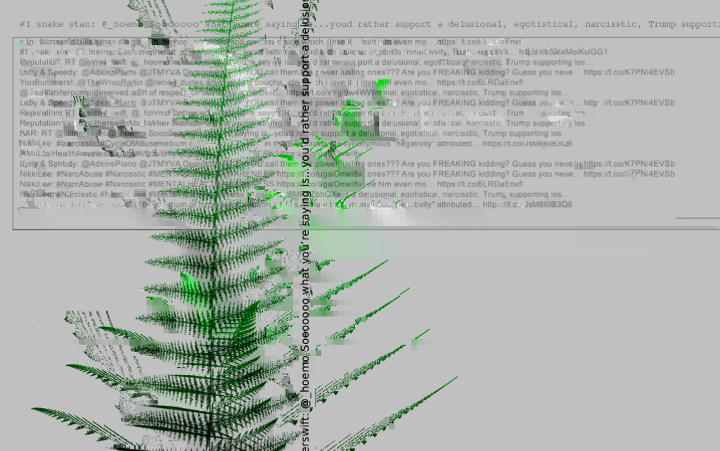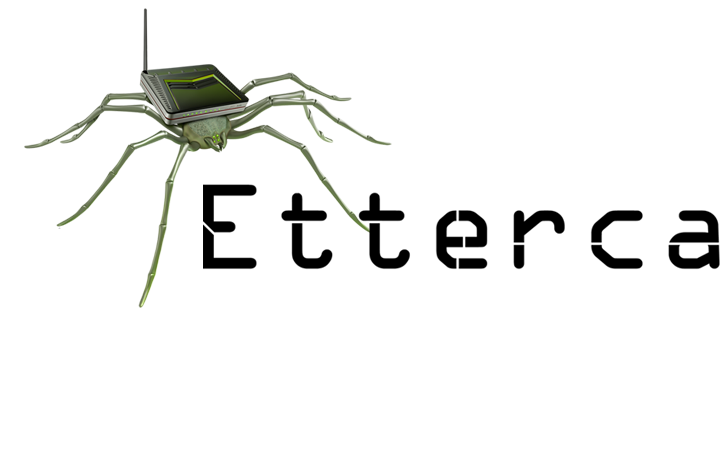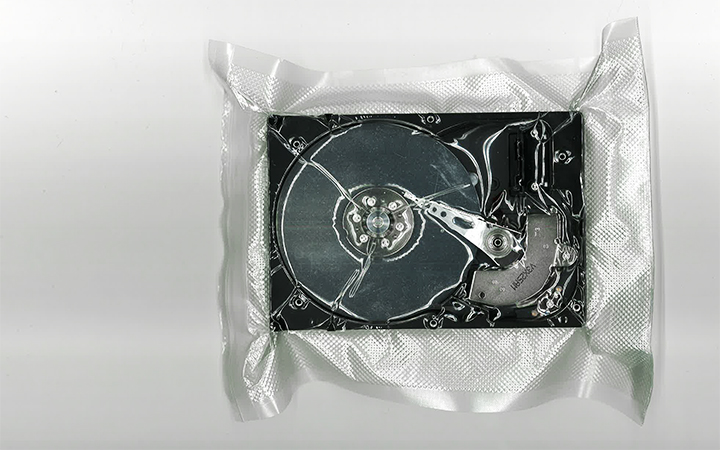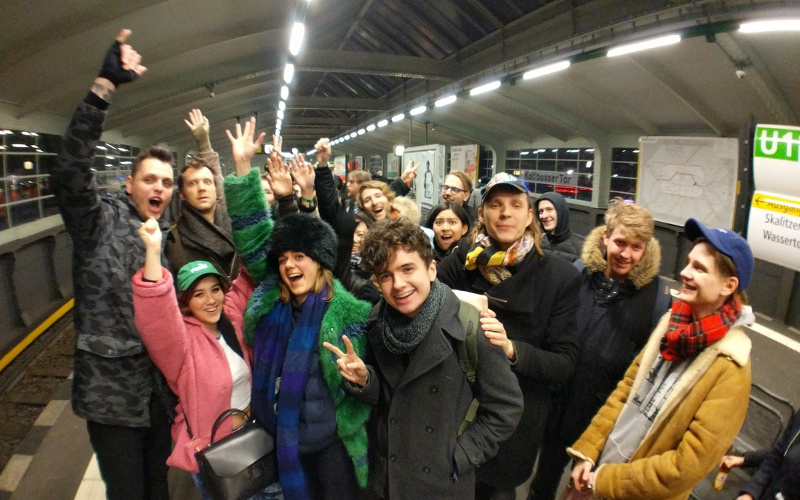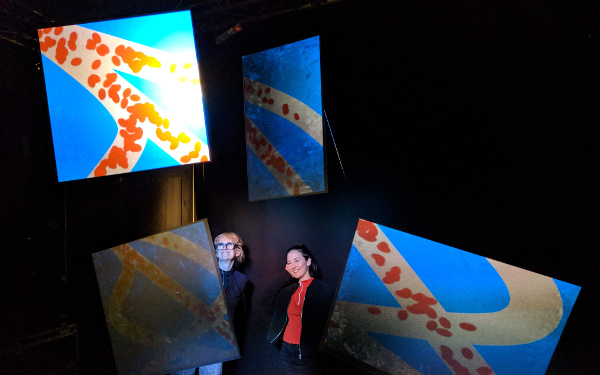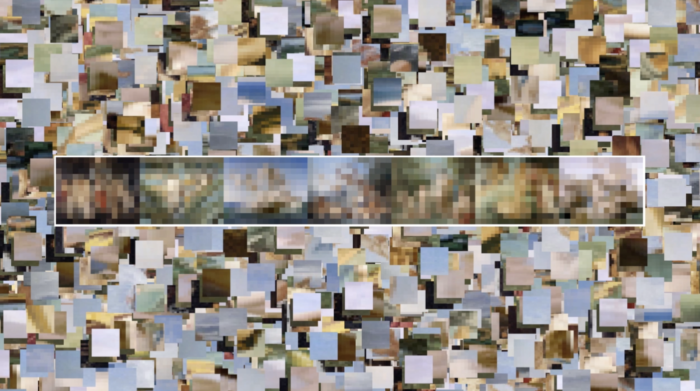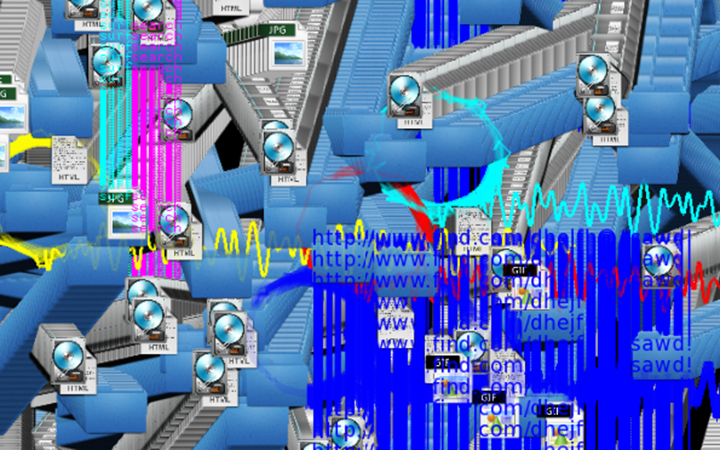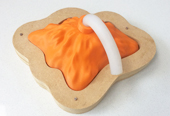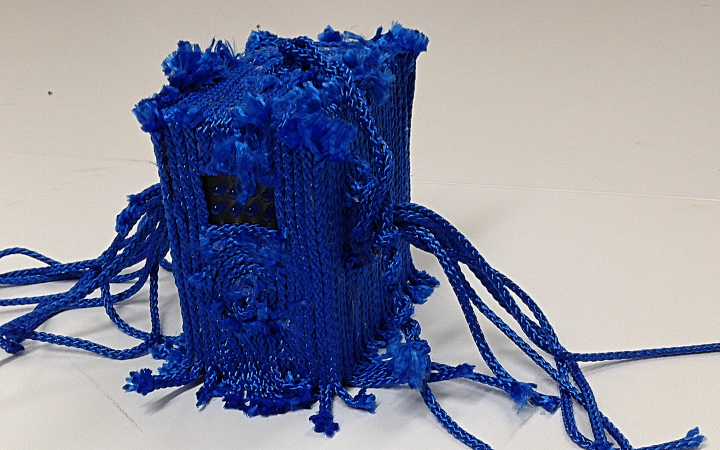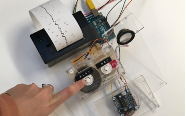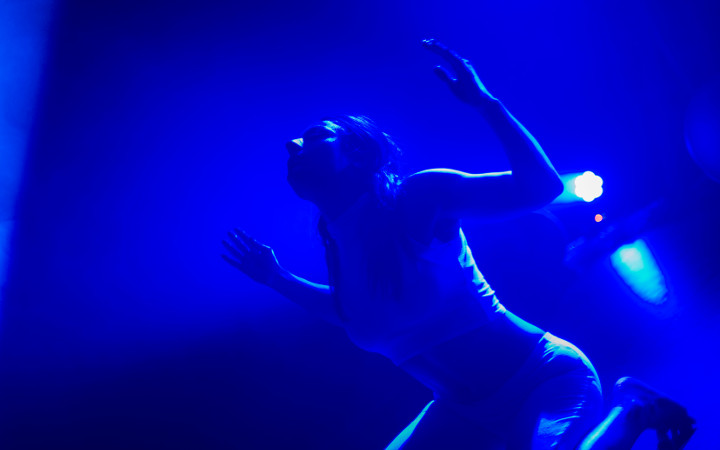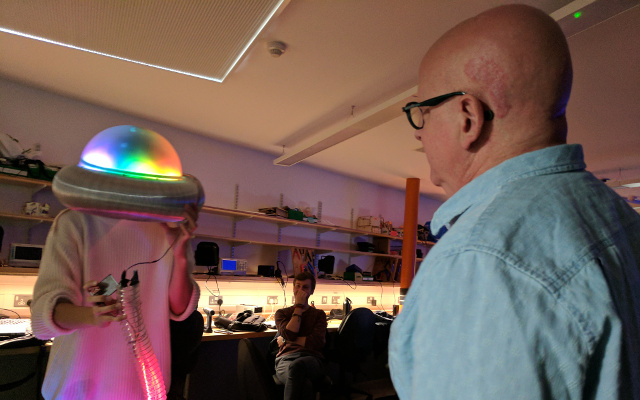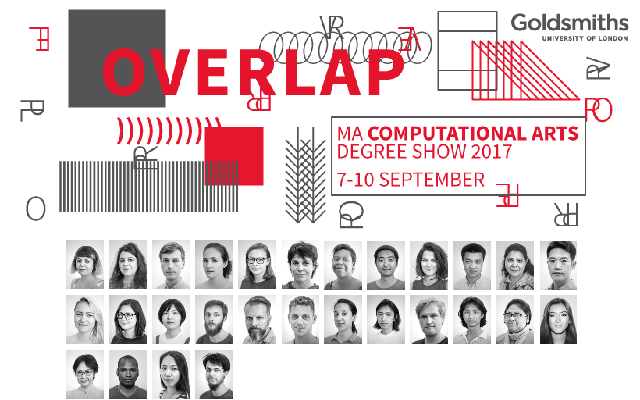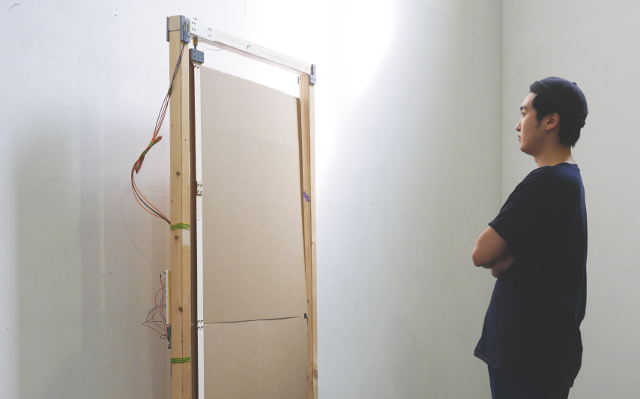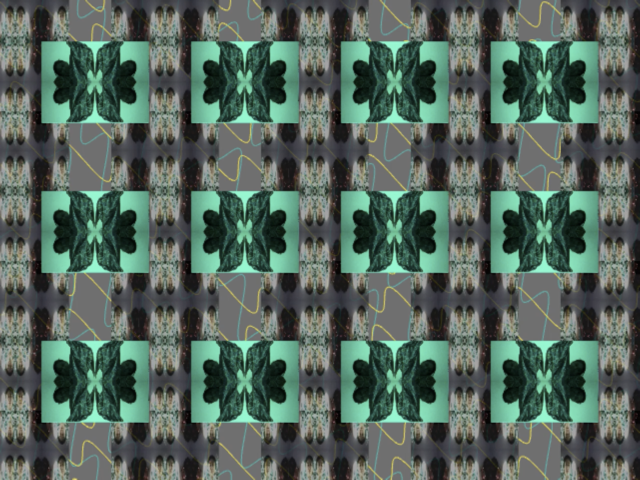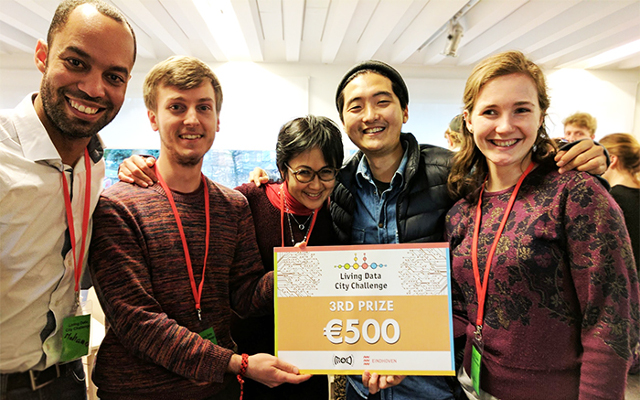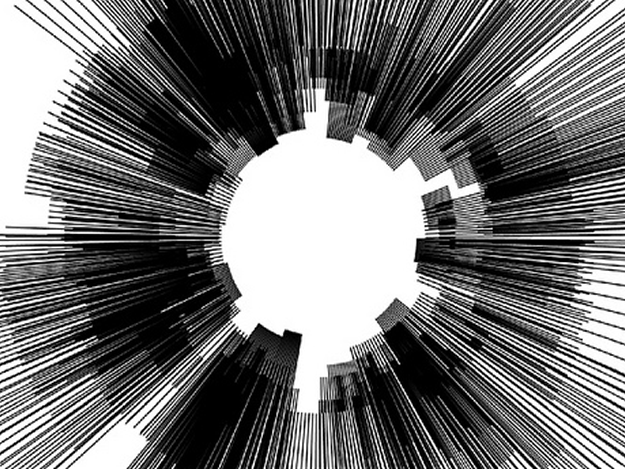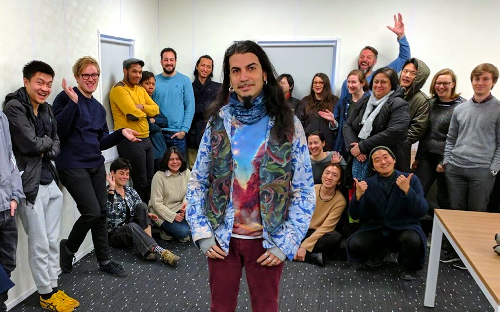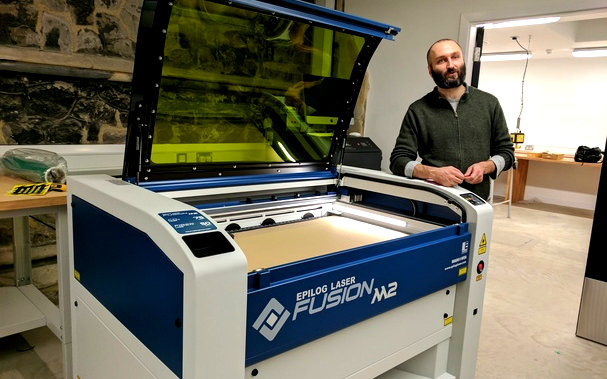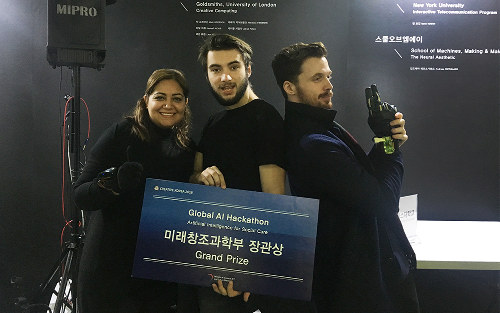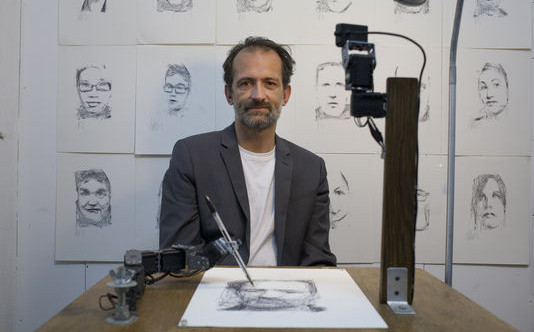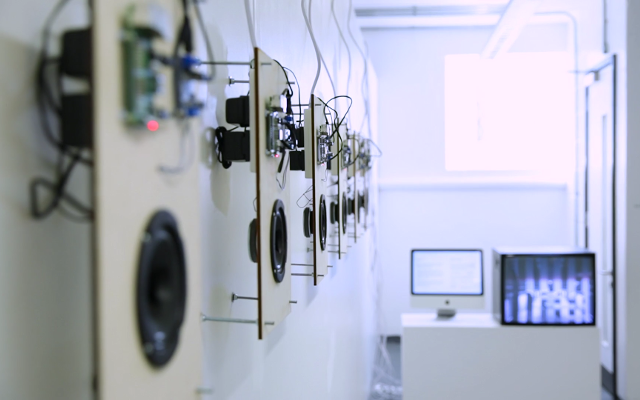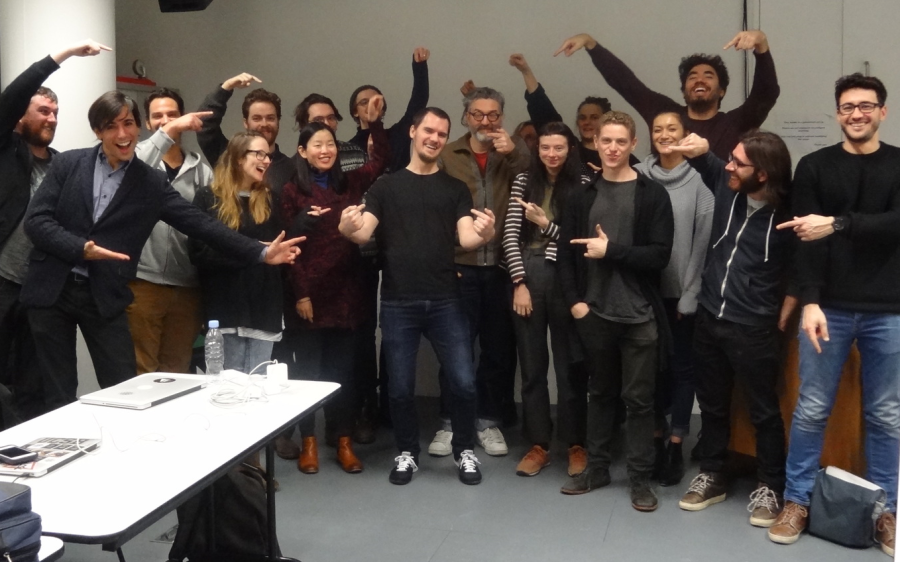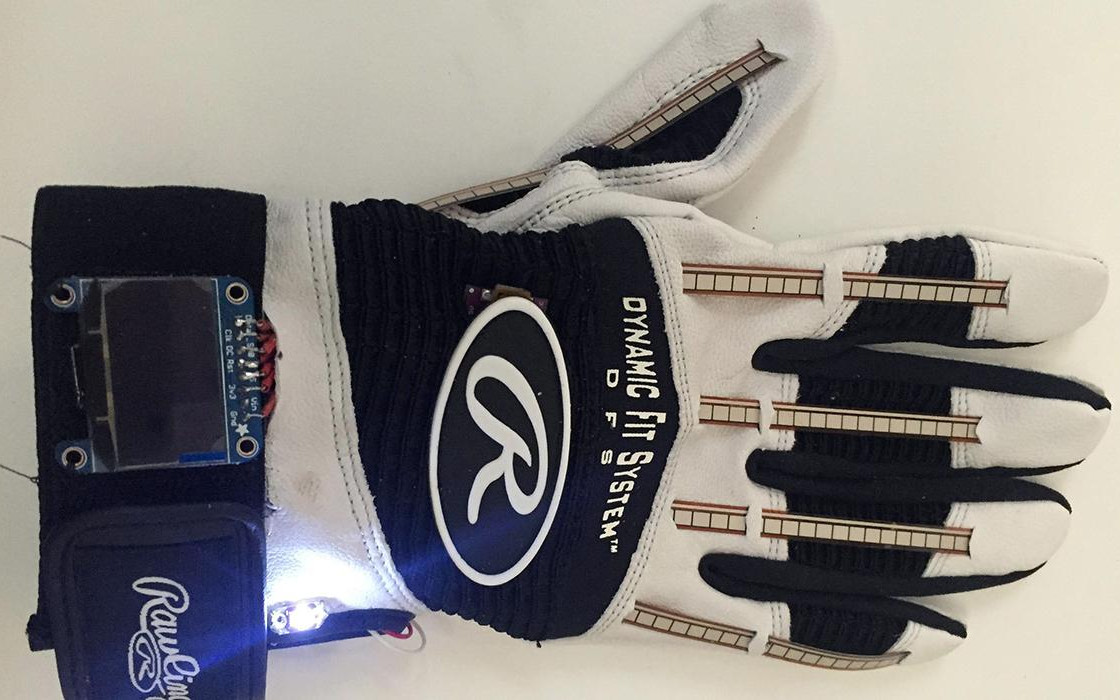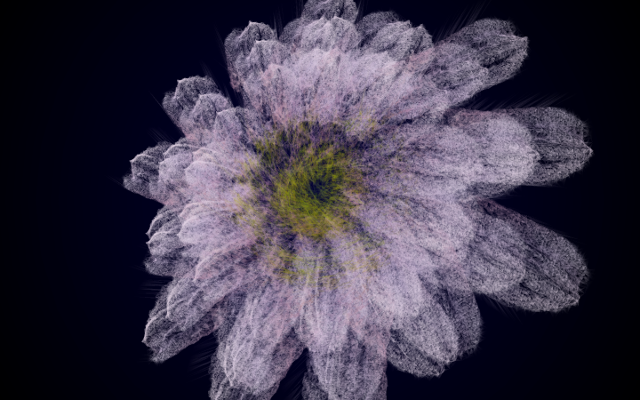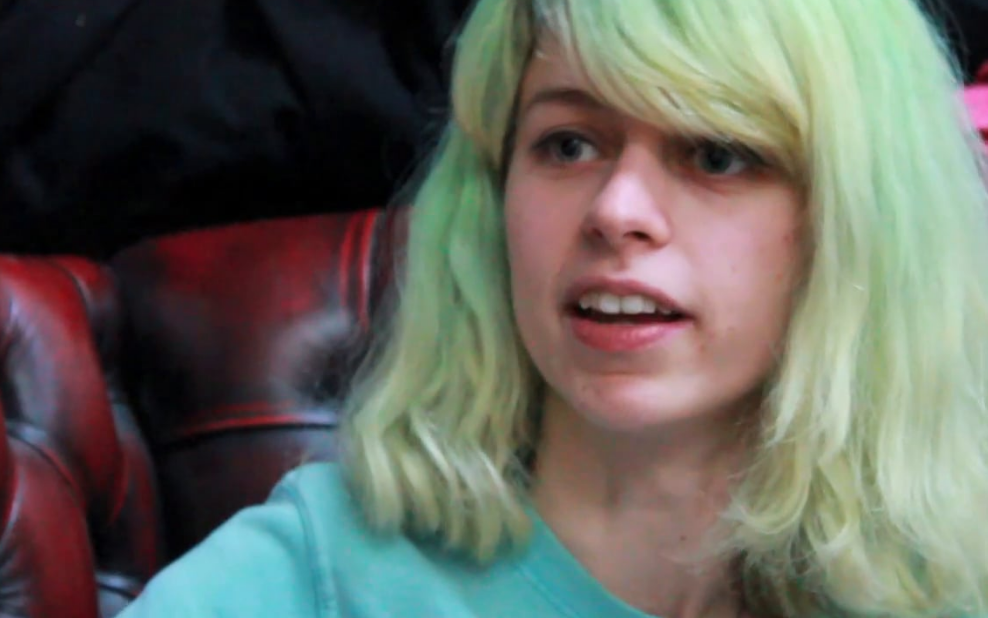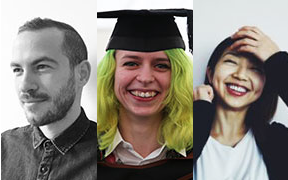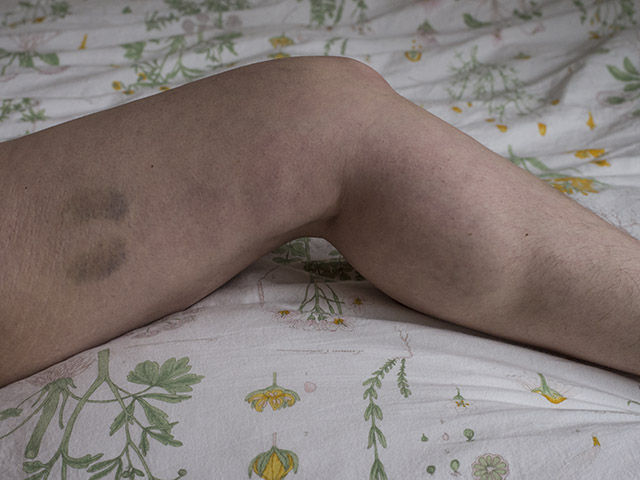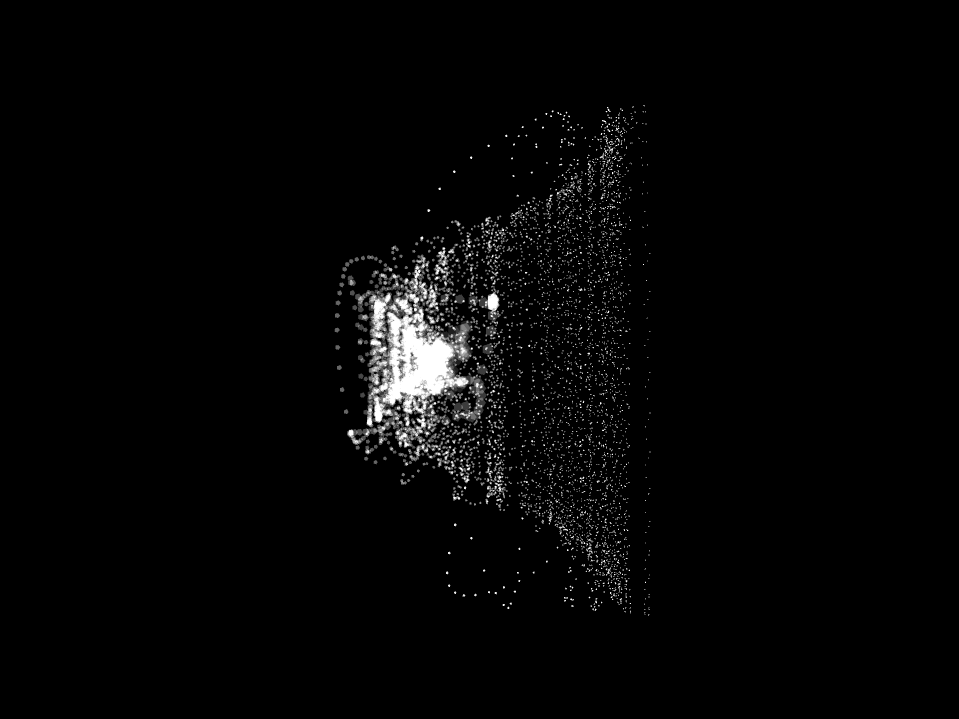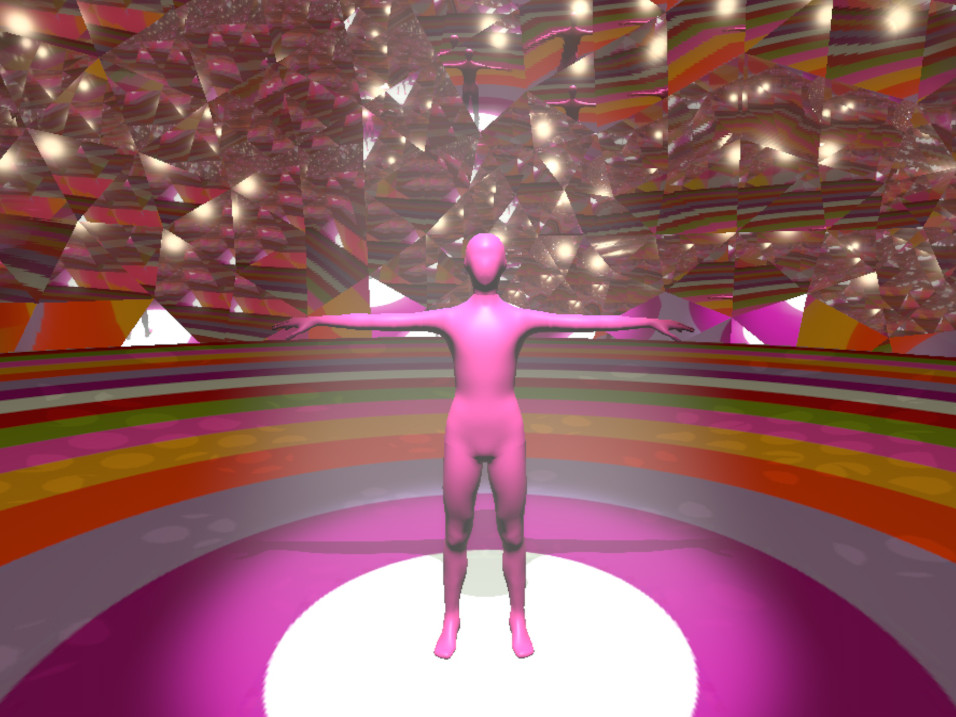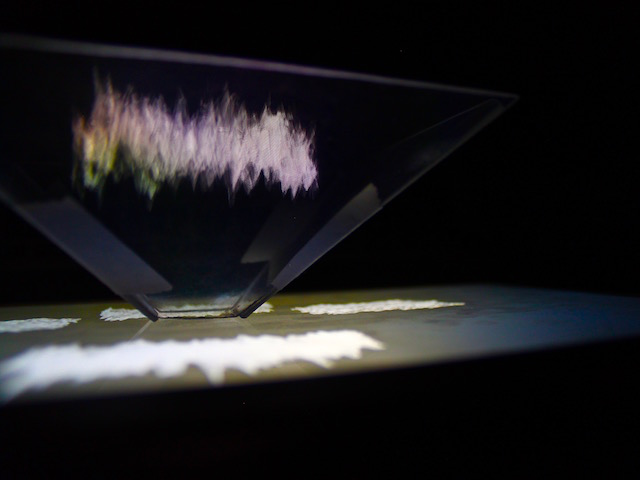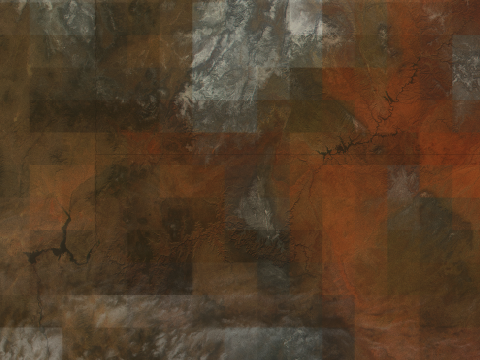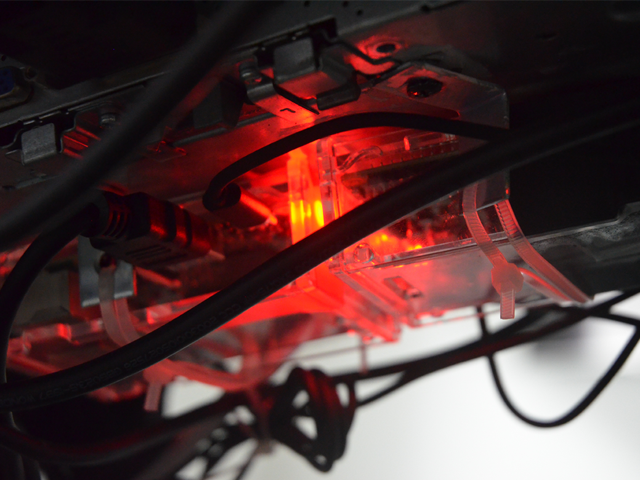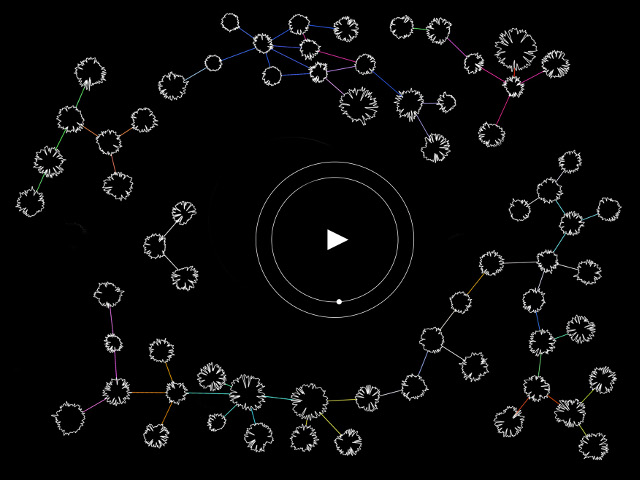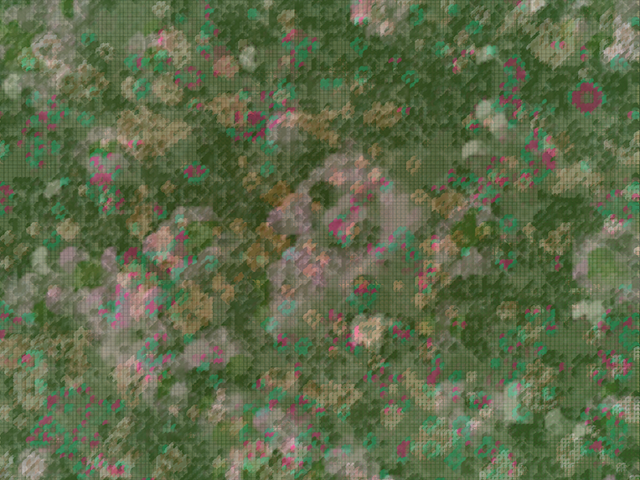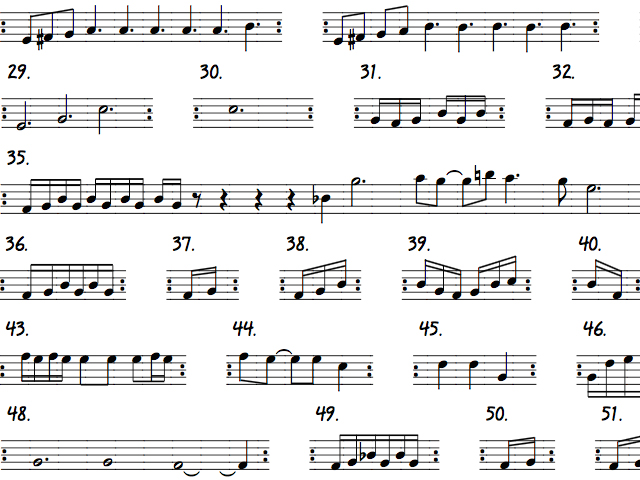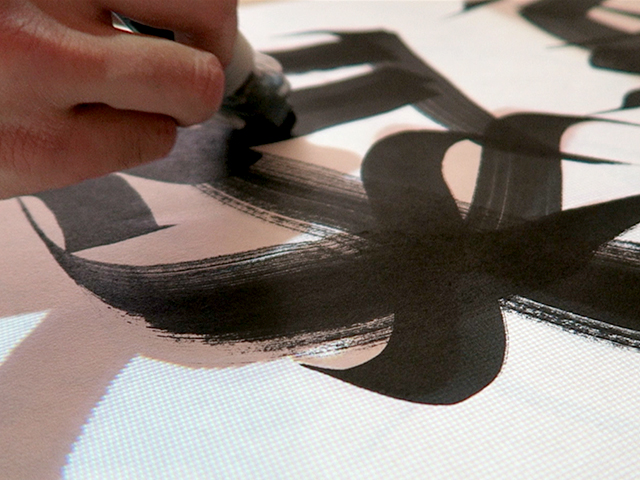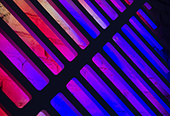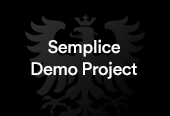Post-Anthropocene Symbiotic Assemblages
Explorations and speculative scenes of the posthuman subject looking at distributed bodies, AI controlled interspecies mediation and bio-hacked self-hybridisation.
produced by: Panja Göbel
The effects of the Anthropocene, the epoch that is characterised by the debilitating effects of human-made actions on the planet such as the current climate emergency scientists are raising awareness for, calls for radical measures and new imaginative futures. This invites a fast forwarding of 50 -100 years and forecasting extreme scenarios and then attempting to untangle how we could move towards a different future with radical new imaginaries.
In this essay I am exploring posthuman possibilities that work towards the sustenance of planetary life. In this context I’m asking how much we are tied to our current anthropocentric body and experience of ourselves? Will there be a point when we can switch the bodies that we inhabit? What would happen to our consciousness? How can we unpack this posthuman subject and navigate these possible reconfigurations and particularly the radical rethinking of our bodies and how these would interface with others?
Advanced capitalism and the reduction of all living things to their utility or market value within an anthropocentric hierarchy ignores environmental and planetary implications to feed its own structures. (Braidotti, 2013). The complex technological infrastructures that we have all around us and also increasingly inside our homes and on our body describe a world that is completely cross wired. Turning back the clock on technology feels regressive if not impossible but we need new imaginaries that embrace technology to move beyond the limited narratives that are created by Silicon Valley. Technological invention needs to become less profit driven and center around bettering life for all rather than just a few whilst strengthening the preservation of the planet through ethical interrelationships between all species.
When considering the Post-Anthropocene, the epoch where nonhuman actors, technology and AI are in charge of the world, the dystopian visions far outweigh the utopian ones. “The displacement of the human agent from the subjective center of its operations” (Bratton, 2013) calls for a bleak and terrifying world . But does it necessarily have to be like this? The critical post humanist Rosi Braidotti argues for the sustained preservation of all life to become the primary goal in the post-anthropocene world. To achieve this means questioning and dismantling existing structures that facilitate exploitation of others and aim for a cross species equality based living. Braidotti talks about a nonhuman yet generative life force that she names ‘zoe’. To embrace this life force we need to work towards the loss of subjectivity as we know it and encompass new cross species interrelations that include technology in newly imagined non-exploitative relations. Braidotti outlines these processes as ‘becoming-animal, becoming-earth and becoming-machine’ (Braidotti, The Posthuman, p66)
Only when we can understand how the rich ecology around us works can we can help preserve it. But this means to stop looking at animals and the environment in relation to their market value and developing more respectful relations not only with our animal friends, nature as a whole as well as our own species. Technology can help us understand the way our environment works.
‘The posthuman subject is then a collective assemblage of multiple figurations in the spirit of collective endurance in times of global environmental devastation.’ (Lau, Carolyn, The Posthuman Glossary, p 347)
In a less profit driven technologically mediated environment that uses a holistic approach when nurturing the equality based interconnections of multiple others, humans, animals, the planet and technology, there is hope for the qualities of the posthuman subject.
I saw them mostly at dusk, walking together attached via a long fleshy coloured umbilical cord type structure connecting them, keeping them close and guiding their purposeful steps. One of them was a meter taller than the other one and slightly leaning down. The little one looked weak to begin with but slowly grew during the walk. Subtly erasing his vertebras to his full child height. There was a regular pulsation eminating from the heart like structure at the centre of his fleshy transparent garment. Curled yet crafted open wires, little tiny LEDs connected at the end of the veiny wires softly flashing up and down to a regular calm rhythm. Tiny red lights reminiscent of glow worms piercing through the post-anthropocene pollution stretching across the sky. The air was hot, thin and tasted metallic. Most people’s lungs were giving up, not able to filter the air and some were beyond the necessary filter implant operations. I heard of these two-wear structures allowing one person to power the other person with their pulse-data. A walk a day would power the other ones pace maker battery whilst also asserting a calming nurturing influence on the wearer and their system. Most people were indoors by now, but these guys always came out then.
How can we understand the posthuman subject and navigate these possible reconfigurations and particularly the radical rethinking of our bodies and how these would interface with others? What possibilities do we have to separate current interpretations of our bodies from our consciousness understanding. Will there be a point when we can switch the bodies that we inhabit? What would happen to our consciousness?
To examine these questions further we need to understand the terms 'consciousness', 'thinking' and 'cognition'. Consciousness being the overarching category describing some from of awareness. Thinking comprises operations that are linked to higher levels of consciousness, ie. abstract reasoning, verbal and mathematical constructions, music composition and similar other tasks that require focus and are amongst all species mainly attributed to humans. (Hayles, Unthought, p14) Many AI tech applications have started to enter this space in recent years, most notably DeepMind’s agent learning system defeating world champion Go player Lee Se-dol in March 2016.
Cognition meanwhile generally described as a lower level function of consciousness, includes attributes such as perception and judgement. It is witnessing and differentiating. A coma patient or a facial recognition algorithm that identified a person. It’s the recognition of a thing without the high level response. It is not just linked to humans and other species with consciousness and central nervous systems, but also to plants and micro-organisms and then the increasing landscape of technical systems managing our lives: traffic control systems, weather forecasting, medical equipment, iOT products and the most pervasive consumer fitness gadgets.
Hayles defines cognition as “a process of interpreting information in contexts that connect it with meaning” extending it to “the special properties that cognition bestows, namely flexibility, adaptability, and evolvability”. (Hayles, Unthought, p118) A technical system can present information in multifold ways, it is operating in a flexible way, collecting information and constantly modulating to new updates of information. Health wearables track and measure our movements, we don’t have to feel exhausted the system will tell us when we are. Likewise Google’s language algorithms are learning the way we express ourselves and are anticipating our conversations until we can literally sleep type.
Katherine Hayles is referring to a “new unconscious” user state that has developed through our mass uptake and interaction with technology. Allowing technology to so closely manage our lives it seems we are kicking back, handing awareness over, “zoning out”.
“At the top are consciousness and unconsciousness, grouped together as modes of awareness. As noted earlier, research on the “new” unconscious sees it as a kind of broad environmental scanning in which events are heeded and, when appropriate, fed forward to consciousness (Hassin, Uleman, and Bargh 2005). The new unconscious differs from the psychoanalytic unconscious of Freud and Lacan in that it is in continuous and easy communication with consciousness.”(Hayles, Unthought p 27) It appears that our brains are adopting a type of standby mode almost as if mimicking other technical devices, for example a security camera that only wakes up when triggered by a motion sensor. Or Amazon’s assistant Alexa that needs to hear the word “Alexa” to act on questions.
Exploring this a little further Patricia Clough talks about the nonhuman ‘Thing-self’, a nascent state within our organism that has the capacity to perform neutral interactions that are not linked to feeling. Clough builds here on the work of the psycho analyst Prof. Sue Grand who performed extensive research with abuse victims to discover a state that allows the body to switch off from any type of perceived pain and emotion. “There is a nonhuman stratum to early self experience and thus, the self can accrue a nonhuman physical form” (Clough, The User Unconscious, XXXI). The interactions that we perform regularily on our devices are not always noticed by us. This 'Thing-State' already performs a multitude of operations without our awareness. Apple’s screen time feature adds up the time we spend on our devices, exposing our phone addiction and in particular the regular checking of status updates to amount to a lot more time than anticipated by us.
If there is a part of consciousness that is able to communicate in an almost independent way, are there any other parts in our brain that could communicate with other species?
Building on Grand’s work around the discovery of the Things-self Clough suggests that digital media and computational technologies might create ‘it’/‘it’ relationships with this other than human state. She speaks of a ‘liveliness of the other-than-human or thing’(Clough, User Unconscious, XXXI), suggesting complex independent communication processes that happen outside of our awareness. So can we actually control these ‘it/it’ communications if we are not conscious of them? We are entangled with the machines around us by handing over our lives to the helpful assistants, the diaries, the satnavs.
Katherine Hayles looks at the ‘cognitive nonconscious’, describing communication and distribution networks between sensors, actuators, processors and storage media: the complex traffic systems, environmental monitoring systems, surveillance and communication satellites, the medical machineries interpreting information, but also increasingly our daily operations with computers, their digital search engines and language learning algorithms. The smartphone and health wearables made this technological interconnectedness mainstream. We are wired to machines via their apps and updates. These ‘complex symbiotic relationships’ with technical systems can bring about neurological changes in the our mind bodies, forming malleable bonds, adapting information as it’s collected, making it personal and storing it for possible later interactions. (Hayles, Unthought, p119) .
The analogue narrative is replaced by the constantly modulating systems, that simulate neurological networks and adjust their content on demand to the relevant perspective. Where does the human nervous system fit into all of this and how is it being altered by these processes? Rosi Braidotti argues that we have all transformed into cybernetic bodies within the advanced capitalist framework of our technology-driven global economy. Through our daily interactions and entanglements with technologies we are now living Donna Haraway’s definition of the cyborg as 'a hybrid of machine and organism' (Haraway, 1991). We function according to the impulses we receive from the machine. The increasing uptake of 'digital detox' or 'off grid' holidays are a symptom of our recognition of the effects that our close symbiosis with the machine has on us. We are changing.
“The main thrust of micro-electronic seduction is actually neural, in that it foregrounds the fusion of human consciousness with the general electronic network. Contemporary information and communication technologies exteriorize and duplicate electronically the human nervous system. This has prompted a shift in our field of perception: the visual modes of representation have been replaced by sensorial-neuronal modes of simulation. As Patricia Clough puts it, we have become ‘biomediated’ bodies” (Braidotti, The Posthuman, p90)
The commercial apps that have been feeding us with constant updates, altered us to now become accustomed to the constantly modulating systems. Currently the apps and their updates are linked to the singular narrative of Silicon Valley and their visions of individual self improvement within a capitalist system. But what other future narratives might there be in a Post-Anthropocene world where the human subject as we know it is dissolved and open to a cross species and less profit driven technologically mediated environment? Could we merge with animals or plants?
Fergal and Cleo had been receiving AI marriage mediation therapy for several years now. They have become used to the process of having their feelings externally managed and were ready for the next step within the system: Bio-mediated interspecies communication. This involved to grant an animal AI access to their personal data-bank of language models. Words were obsolete at this point but it helped the AI to translate these into image associations that combined with brain signals were arranged into sequences. They started this process with their cat Alphy. At first Fergal struggled with the slow pace but then enjoyed the relaxing phase of intense goldfish hallucinations only occasionally interrupted by abrupt flashes of adrenalin when piercing bird images flickered across his brain. Cleo adversally responded to these intense interruptions and decided to change her cross species AI opting for a slower paced plant AI and connect with her Bird’s nest ferns. She found the minute pulses of pheromones and low frequency sound signals soothing. After the initial onboarding phase she soon longed to join the WOOD-WIDE WEB, a signalling communication network between tree root systems and mycorrhizal funghi. Fergal and Cleo separated when an interspecies AI upgrade failed and Fergal joined Alphy in chasing a bird but then during the hunt crushed his whole weight onto the Bird’s nest fernery. Cleo’s dream has now become a reality. She lives in a forest and joined the WOOD-WIDE WEB, where she oversees the chlorophyll production process and stops any external disruption to their sensitive networks. Fergal’s cat AI has been in touch with images of their fernery regrowth. She responded with some warm flashing pheromone pulses.
Body enhancement is booming. Designer bodies are rapidly pushing the acceptance boundaries from the ‘so called natural’ to the ‘deliberate artificial’. Time will tell how much we are tied to our current anthropocentric physical shape and experience of our body.
During meditative exercise systems such as Yoga where the mind is purposefully switched off or rather turned into a witnessing state, the body can create an expansive state that is defined by movements purely regulated by muscle memory.
Patricia Clough explains that the ‘I’ feeling can contract or expand to include the body, alternatively the body can contract or expand to include the ‘I’. How does the ‘I’ define it’s accepted body? How easy is it for the ‘I’ to be represented by something else and in effect switch it’s body representation?
VR applications have the capacity to help with this transition and allow the user’s ‘I’ to embody something else for example a particle cloud. Jaron Lanier calls this process “homuncular flexibility” which means the user adapting to unaccustomed body representations.
“It turned out that people could quickly learn to inhabit strange and different bodies and still interact with the virtual world. I became curious how weird the body could get before the mind would become disoriented. I played around with elongated limb segments, and strange limb placement. The most curious experiment involved a virtual lobster (which was lovingly modeled by Ann Lasko.) A lobster has a trio of little midriff arms on each side of its body. If physical human bodies sprouted corresponding limbs, we would have measured them with an appropriate body suit and that would have been that...The result was that the principle elbows and knees could still control their virtual counterparts roughly as before, while still contributing to the control of additional limbs. Yes, it turns out people can learn to control bodies with extra limbs!” (Jaron Lanier, 2015)
If our understanding of ourselves so quickly becomes accustomed to new body representations how would a modular body system of 3D printed components affect our mind?
OSCAR 5 is a speculative living organ system made from human stem cells that acts as a prototype for the modular body. Currently the size of a human hand it’s designed to have interchangeable limbs, lungs and an electronic brain. With these developments existing in prototype form already the possibilities of what we do with them are endless. Eternal life is one aspect, but who will decide on how many livers a person is allowed to print? Will there be an AI overseeing the design of our future bodies?
Our bodies could become networked and distributed to work for the greater good of the planet. Maybe our bodies will become interchangeable, allowing us to be in several places simultaneously? Could I have a lung in one location and my body running in a different one? Conversations on whether we could merge with other species are on the table. We could envision different body constructions, moving away from current human definements and looking at insects or other species for inspiration. Where we go with this developmental research is up to us.
It started with extreme surgery, transgenic transformations and self-hybridisations. Humans explored feline characters, birds of prey flying technology and owl vision implants. Biotechnology had gone mainstream. Most humans experimented with 3D printing new improved organs, it was easy to replace them these days, everything had become modular. Temporarily there was a Green Fluorescent Protein craze extracted from jellyfish and implanted into the organs to have these glow in the dark. Full Moon parties awash with dancing glowing kidneys, lungs and livers. Then there was another climate change emergency which demanded global action and a huge uptake of volunteers for a new smart skin trial. Plant proteins that would allow photosynthesis were to be injected across the skins of populations across the globe to allow chlorophyll production and foliage growth to accelerate oxygen production. The smart skin was engineered to visualise toxins by changing its colour whilst also to repair and remake itself. It’s sensory data was cross linked with the brain allowing humans to change position for better synthesis. To improve the uptake of the trial the system lured in influencers with high grade pedal plant proteins. These skins normally only released to users after several years of planet improvement work were exhibiting stunning colourful pedal formations across the body. Users could let their creativity run wild mainly hiring re-trained tattoo artists to inject the biohacked proteins onto their skins.
References
Rosi Braidotti, The Posthuman (Polity Press, 2013)
N. Katherine Hayles, Unthought: The Power of the Cognitive Nonconscious (University of Chicago Press 2017)
Patricia Ticineto Clough, The User Unconscious - On Affect, Media, and Measure (University Of Minnesota Press, 2018)
Beatriz da Costa and Kavita Philip, Tactical Biopolitics. Art, Activism, and Technoscience (MIT Press, 2008)
Donna Haraway, A Cyborg Manifesto (Routledge, 1991)
Rosi Braidotti and Maria Hlavajova, Posthuman Glossary (Bloomsbury Academic 2018)
Panja Göbel, Can you wear your mother http://doc.gold.ac.uk/compartsblog/index.php/work/can-you-wear-your-mother/
Panja Göbel, The Paw http://doc.gold.ac.uk/compartsblog/index.php/work/the-paw/
Richard Mabey, The Cabaret of Plants, Botany and the Imagination (Profile Books, 2015)
Liam Young, Machine Landscapes, Architectures of the Post-Anthropocene (Architectural Design, 2019)
Rory Hyde and Mariana Pestana. The Future Starts Here (V&A Publishing, 2018)
James Bridle, The New Dark Age (Verso 2018)
Jaron Lanier, 2006 : WHAT IS YOUR DANGEROUS IDEA?
Susan Kozel, The Archival Body: Re-enactments, affective doubling and surrogacy
Patricia Ticineto Clough, The Autoaffection of the Brain and the Nonhuman Unconscious
The Modular Body An online science fiction story
7 Bio-Artists Who Are Transforming the Fabric of Life Itself

